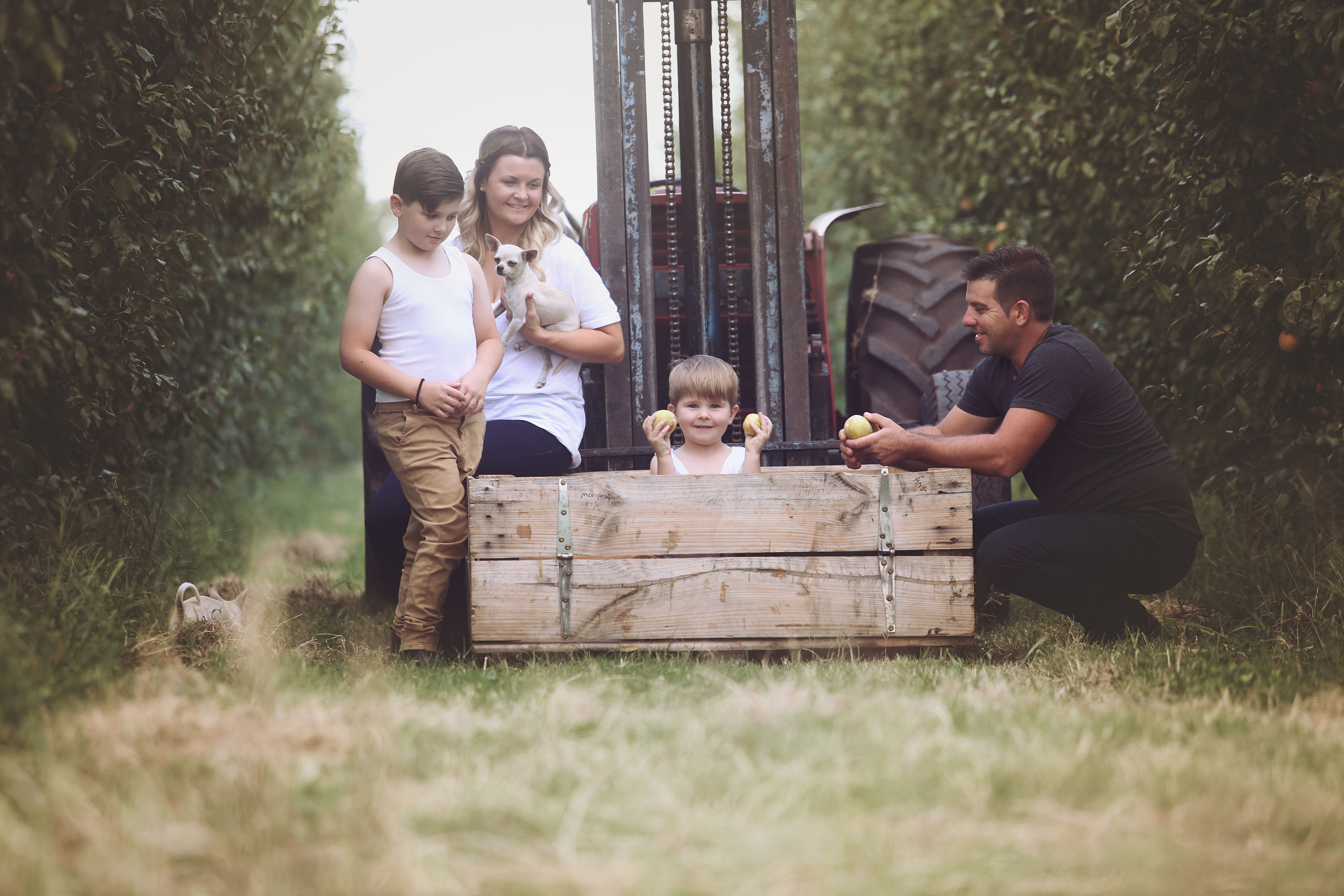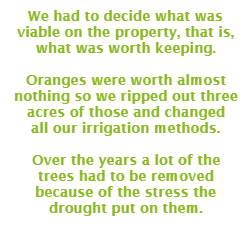Drought in Hindsight: Family in Agriculture
Meet Liza Kalogerias

Liza and her family live on a 20 acre property in Renmark North, which is located along the River Murray in a region called the Riverland. Agriculture is the largest employer in the area, which produces about half of South Australia’s wine grapes, with other major enterprises in citrus, stone fruit, almonds, and vegetables [1].
The town of Renmark is steeped in farming history—it was the first irrigation colony in Australia, with the Canadian-born Chaffey Brothers founding the irrigation settlement in 1887 [2].
The climate is semi-arid, with an average rainfall of 243.7mm, and the region is entirely supplied by the River Murray. Irrigation delivery infrastructure is highly efficient as it is 100% piped and metered from the river [3].
The regional economy of around $2.2 billion has a high dependence on irrigation, with wineries, packing sheds, and other food processing reliant on a consistent supply of irrigated crops [4].
Q: Where were we you living toward the end of the Millennium Drought (specifically 2006-2009)?
A: Renmark North, South Australia.
Q: As irrigators in the Riverland what were you growing during the end of the Millennium Drought?
A: On our property at the time we were growing mainly apricots and plums (stone fruit), and a small amount of oranges.
Q: Could you share a short personal story or experience that sticks out in your mind from the drought?
A: My husband and I were newly married and we’d started making arrangements to go on our first overseas holiday. However, the drought meant we had to look for other ways to make our business more viable, so instead of going to Greece we bought a truck and decided to sell a large quantity of second grade fruit (fruit with minor marks). This fruit would usually be thrown out as the supermarkets had no use for it.
Using our new truck, on weekends we took the second grade fruit to Adelaide (South Australia’s major city about three hours’ drive away) to a farmer’s market that had thousands of people through the gates every Sunday. We still attend that same market today—it’s the only reason we survived the drought and are still viable to this day.
Q: With the drought in mind, what is one piece of advice you would tell your past self?
A: It’s hard to stay positive in these kinds of situations; never think being on a property like we operate that you’ll have security or that everything will always go to plan.
Also you have to prepare even if things are running smoothly—you never know what’s around the corner so be prepared for the worst.

Q: How did the drought affect you the most?
A: We were just not prepared for the drought at all. We’d only been on the property for four years and when we borrowed to purchase the property we didn’t have a lot of borrowing power to buy water.
Through increasing overdrafts and re-mortgaging my husband’s mother’s home we were able to borrow $100,000 (not to mention the interest on that as well). We still owe money with high interest so emotionally this is a stress that will never go away; you just have to deal with it. I’ve definitely created a thick skin over the years.
Q: What was the biggest thing you had to change about your life during the drought?
A: Things were so tough the government would help out with support payments to struggling farmers. Although they were a help, instead of the grants and support payments (adding up to millions upon billions), I wish the government had just purchased the water needed for irrigators at the time. To this day we still rely on payments while paying off the high interest loans—these things didn’t go away when the water allocations returned.
Q: Did your attitudes toward water change during/after the drought?
A: Water is so precious to all farmers so not many of us would ever take it for granted, but since having our water allocation back we have taken full advantage of it while we have it. We’ve redeveloped our property and most of the trees are young now, so getting through on 52% water allocation this year will be much easier as younger trees need a lot less water.
Q: What are some of the future challenges of managing another drought in your region?
A: I feel like another Millennium Drought could bring regional Australia to an end. We live in a society where we receive so much imported produce that the Australian fruit bowl could well become a thing of the past. I also think it’s unreasonable to say we’ll be prepared for another drought because our lives hang in the balance depending on the government of the day and the choices they make.
Q: What are the top three things you believe irrigators can do to prepare for drought?
A: The first thing I’d suggest is to ask yourself if your business is viable enough to save in a disaster situation. Secondly, look for alternatives to plant that use less water, and thirdly, look at your irrigation—analyze if you’re using the best water saving methods suited to your planting needs.
Download (87 KB) this Q&A as a PDF.
Thank you Liza for kindly sharing your insights with the people of Alberta!
Sources:
1, 2, 3, 4: Murray Darlin Basin Commission, Archived, Guide to the proposed Basin Plan, Technical background part III, Appendix C: Riverland Community Profile.
